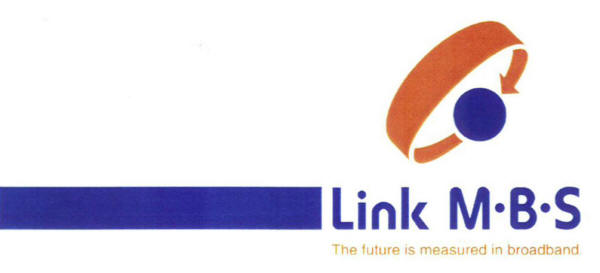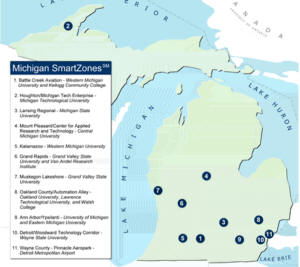www.mybaycity.com
October 12, 2003
(Prior Story) Business ArTicle 312 (Next Story)
Sponsored by Bay Area Chamber of Commerce

Study Says MBS Region should seek state legislation to create a "Smartzone" to encourage major research facilities to locate here. MBS Region Should Seek "Smartzone" Status
|
||||||||||||||
| Printer Friendly Story View |
The Midland-Bay-Saginaw region has all the ingredients to earn its place among the world's most technologically advanced communities and thereby secure its economic future.
That's the conclusion of the Link Michigan Telecommunications Executive Summary report put together by a consulting firm and presented recently to the Link MBS Task Force.
A major recommendation is that the MBS Region should seek state legislation to create a "Smartzone" to encourage major research facilities to locate here. "Enterprise Class" businesses will only locate in a region if there is very high capacity broadband service, the report concluded.
There are 10 "Smartzones" in the state and one site has lost its designation for failure to meet requirements. "This may present an opportunity for the MBS Region to seek such designation," state the consultants. Such an effort may have leverage especially now that Saginaw Valley State University has a GigaPOP connection point on its campus. This GigaPOP isoperated by the MERIT Network and is part of the Next Generation Internet (NGI) or Internet 2, connection supercomputers and very high-speed processors. GigaPOP is a Point of Presence connection that can transfer data at speeds over one billion bits per second, a requirement for NGI.
Below:(Left)There are 10 "Smartzones" in the state and one site has lost its designation for failure to meet requirements. "This may present an opportunity for the MBS Region to seek such designation." (Right)Local region has all the ingredients to earn its place among the world's most technologically advanced communities.


A survey taken early in 2002 termed the region "underserved" by broadband Internet providers and documented average Internet dial-up speeds among the lowest in the state."However, it appears that the MBS Region has closed any gap that may have existed," the report states, explaining: "Both DSL and cable modem coverage have expanded in the past year." A survey shows that more than 65 percent of those surveyed have used the Internet and 60 percent of residential users use the Internet on a daily basis and more than 65 percent of businesses have a high-speed connection. About 40 percent of home users in the MBS Region use some form of high-speed or broadband connection, above the national average of 31 percent.
About 60 percent of users access the Internet through dial-up service, including AOL with 27 percent of users, and about 30 percent use Charter's high speed cable modem service. About 48 percent use the Internet for recreation, 44 percent for work/school/recreation and 36 percent use it for stock trading.
Consultants conducted a study as part of a comprehensive statewide review of Michigan's broadband availability and strategy. The LinkMichigan initiative was launched in May, 2001, by the Michigan Economic Development Corp. (MEDC), which developed a "Smart Tech Agenda" for the entire state.
MBS and about 20 other regions received planning grants to begin to develop their own broadband deployment plans. The LinkMBS Task Force consists of members from the Midland Economic Development Council, Saginaw Future Inc (SFI) and Bay County, which is in the process of forming a new coalition for economic development under leadership of Dominic Monastiere of Chemical Bank and County Executive Thomas L. Hickner.
The Task Force will assess the current status of and demand for telecommunications service in the area, identify barriers and make recommendations to governments on howto best position the region for economic growth.
The fundamental purpose of Link Michigan is to prepare the state and this region for global competition in the New Knowledge Economy. The "Long Term Vision" of the local planning group is to make the MBS Region one of the most competitive and tech-friendly regions in the world.
Methods of enhancing the region's telecommunications readiness include improving access to utility poles and conduits, including broadband in new developments, expanding e-government "best practices," developing creative demand side broadband deployment incentives and focusing on the telecommunications needs of telecommuters, students and residents of low income housing.
According to the report, broadband usually requires access to a cable modem, a high-speed telephone DSL (digital subscriber line) or a high-speed wireless connection. Business level broadband services providing greater speeds and capacities include T-1, DS# or OCn (fiber optic) networks. All classes of broadband consumers are increasing demand for high-speed access to the Internet at record rates.
A complete copy of the report may be obtained by contacting MyBayCity.com at e-mail Carraroe@aol.com or by calling 989-892-8501.
| Printer Friendly Story View |

|
Prior Article
March 5, 2025 by: Stephen Kent St. Patricks Parade 2025 - IT's TIME |

|
Next Article
February 10, 2020 by: Rachel Reh Family Winter Fun Fest is BACC Hot Spot for 2/10/2020 |
|
|

Dave Rogers |
|
|
|
Printer-Friendly Story View
0200 Nd: 04-28-2025 d 4 cpr 0
12/31/2020 P3v3-0200-Ad.cfm
SPONSORED LINKS
12/31/2020 drop ads P3v3-0200-Ad.cfm
